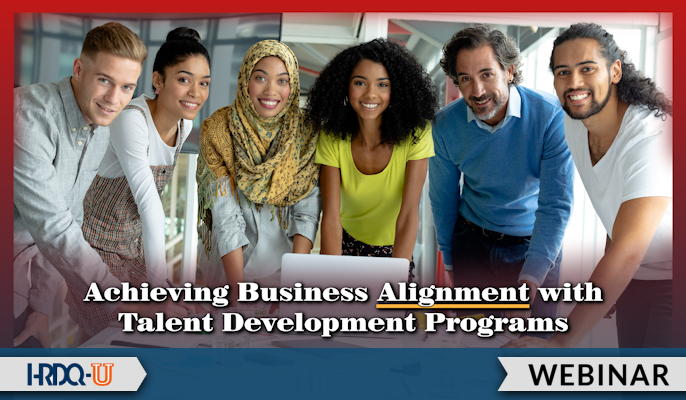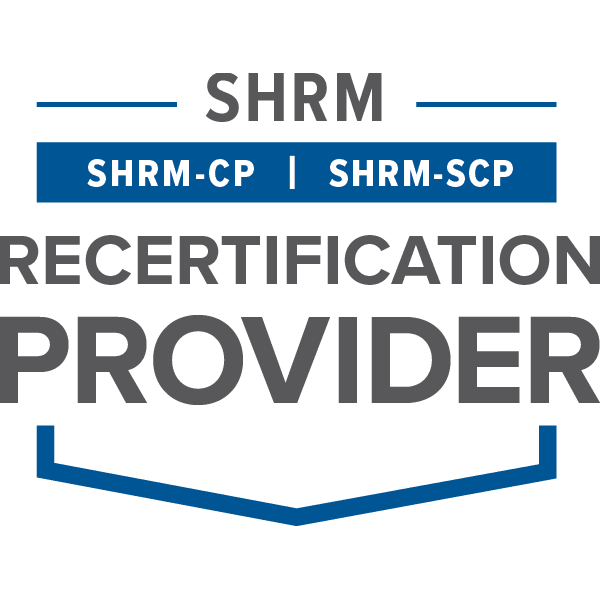Log In
View Upcoming Events

Recorded, on-demand webinars are available for HRDQ-U Members. Join today!
Does the program connect to the business? Does it drive business? If so, how much and how do you know? These are all questions asked of today’s talent development program owners.
This session will explore how business alignment is achievable at the beginning of a talent development program by connecting the program to a specific business measure and ensuring that the focus remains through the program with specific impact objectives. This session will also describe how to collect impact data and isolate program effects from other factors to prove that business alignment has occurred. Using examples, case studies, and exercises, this session will emphasize the need for business alignment for talent development programs.


The Business Case for Learning
Learning and development is essential to an organization, but it is often overlooked. Explore why learning is absolutely necessary, how it adds value to an organization’s bottom line, and how to enhance the learning and talent development investment.
Take 15% OFF with code CASEFORLEARNING
Patti P. Phillips, PhD, CEO of ROI Institute, Inc., is a renowned leader in measurement and evaluation. Patti helps organizations implement the ROI Methodology®️ in more than 70 countries around the world.
Since 1997, Patti has been a driving force in the global adoption of the ROI Methodology and the use of measurement and evaluation to drive organizational change. Her work as an educator, researcher, consultant, and coach supports practitioners as they develop their own expertise in an effort to help organizations and communities thrive. Her work spans private sector, public sector, nonprofit, and nongovernmental organizations.
Patti serves as a member of the Board of Trustees of the United Nations Institute for Training and Research (UNITAR). She serves as chair of the Institute for Corporate Productivity (i4cp) People Analytics Board, Principal Research Fellow for The Conference Board, board chair of the Center for Talent Reporting (CTR), and is an Association for Talent Development (ATD) Certification Institute Fellow. She also serves on the faculty of the UN System Staff College in Turin, Italy.
Patti has authored or edited more than 75 books on the subject of measurement, evaluation, analytics, and ROI. Her work has been featured on CNBC, Euronews, and in more than a dozen business journals.
Connect with Patti on Twitter, Facebook, and at www.roiinstitute.net.
Training Tools for Developing Great People Skills
This event is sponsored by HRDQ. For 45 years HRDQ has provided research-based, off-the-shelf soft-skills training resources for classroom, virtual, and online training. From assessments and workshops to experiential hands-on games, HRDQ helps organizations improve performance, increase job satisfaction, and more.
Learn more at HRDQstore.com

“Patti P. Phillips is a true impact thought leader. Kudos to her and the ROI Institute!”
Matic K.
CEO
Video Center Ltd

“Great presentation that not only is going to help me professionally but in my personal life, especially with my teenagers at home. I can see now the cases we can work on (savings or improvements) and at the same time teach my kids to introduce the methodology in their lives.”
Miriam V.
UITS Finance Officer
University of Arizona

“Excellent presentation. The short video was a good addition; it brought an extra spark to the thought and learning process.”
Barbara S.
Program Management Specialist
University of Maryland Baltimore County
One Response
Q&A from the webinar.
Question: Is it always possible to isolate the effects of my program from other factors?
Answer: Yes, ma’am, it is. Worst-case, your use estimation process. Ideal case, you set up an experiment. What we’re finding is that, and thank goodness for technology and focusing on analytics, we’re becoming more comfortable with experimental experimentation. It’s part of design thinking. So we’re seeing an uptick in the use of control group that’s ideal. But if you can’t, and you can’t use train line analysis or some kind of modeling, then yes, you can isolate the effect of the program using estimates.
Question: How do you measure the impact of a project?
Answer: So, we use project program initiative, it’s the same way because your project is intended to do something, you know, why the project at all? But a program, a training program, is nothing but a project. That’s all it is, is just call it a training program. So you do it the same way. You get started out with the why. Why are we doing this project?